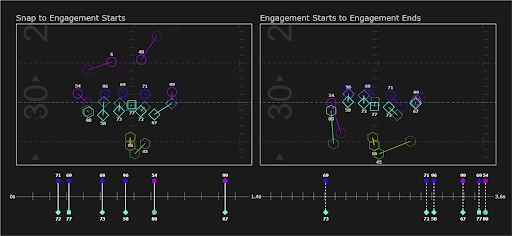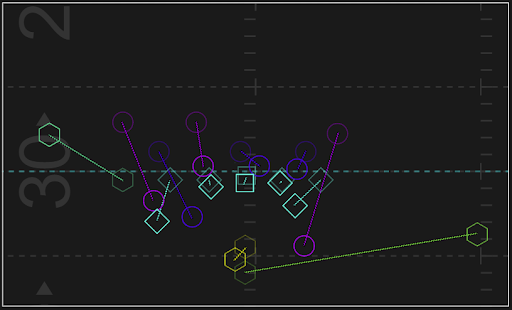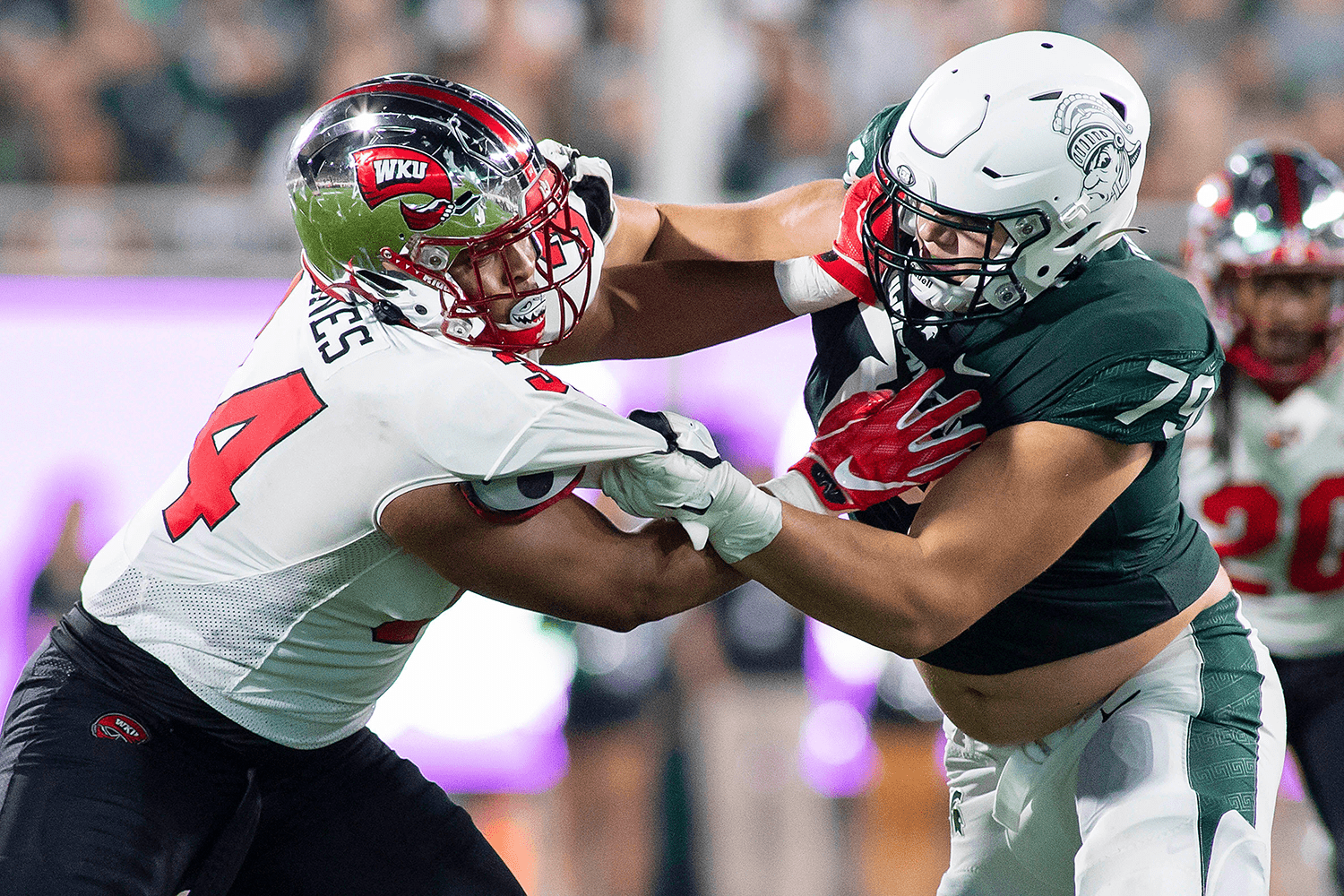It is beyond cliche at this point to say that football is a game won and lost in the trenches. Line play would be in danger of being called underrated for so long that it became overrated. However, the absence of reliable, detailed data on the contest over the line of scrimmage has made properly evaluating the work done by the lines difficult, if not impossible. Until now.
StatsBomb’s Line Battles data contains detailed breakdowns on every snap, cataloging the fundamental information such as:
- Who blocked whom?
- When?
- Where?
- When and where did the “engagement” end?
The result is visibility into line play at a nearly unprecedented level. On every play.

It is more than simply the raw data. Coaches and coordinators have spent — and continue to spend — countless hours gleaning the same information from analyzing film. And while nothing is going to replace that study, aggregating the data points collected across a game or season gives them a tremendous head start.
For example, simply knowing which gaps and what defensive techniques tended to result in pressure on the QB will allow those coaches and analysts to focus much more intently on the areas of concern (for the offense) or opportunity (for the defense).

In the example above, identifying that the right guard was struggling with protection or that defenders lined up in 1 and 2i techniques between the center and left guard had great success provides exactly that kind of guidance.
The specificity of the timing and location of line engagements also allows for illustration of coaching points for individual players. Offensive tackles are often left on an island to deter opposing edge rushers, meaning they have a much wider arc of responsibility than linemen in the interior. Getting off the line quickly and dropping the proper distance is imperative.
Don’t drop quickly enough and the rusher can turn the corner and get a free run at the QB at the height of their drop back - see the left tackle in the example below. Too deep a drop, especially if it forces the tackle off balance, and the defense can get into the backfield with a counter-move to the inside, as happens to the right tackle below:

This data is equally powerful in terms of analysis of defensive play.
In many cases, defensive line and lineman stats are the reverse of those on the offensive side. How frequently does a defense get pressure on the QB, and from which gaps? How quickly is an individual lineman or linebacker able to get off of the initial block in trying to reach the passer?
But pressure is not always or even most often the result of individual excellence, but of coordination and game planning. For a successful edge rusher, deciphering which combination of personnel and technique across the defensive front most overlapped with those good outcomes could be key in ensuring the good times keep rolling or provide a roadmap for correcting from a temporary slump.
Of course, protecting or breaching the pocket is only a sliver of the data we are collecting. Line battle information can easily be combined and cross referenced with all the same personnel, formation, down & distance and other information we’ve been describing in these articles to give a fuller account of why pressures and sacks occurred or the impact of pressure (or lack thereof) on the downfield aspect of the passing game.
Identify a selection of passes where a quarterback consistently misses the target high? Cross referencing those attempts with the line battle outcomes of those plays could illustrate these misses most often result from pressure from a particular direction.
Concerned about a lineman drawing frequent flags for holding? This information can help illustrate the situations in which he gets a little too grabby.
Football is an intricate game, and the range of situations which can be investigated with StatsBomb football data are limited only by the experience and imagination of the questioner.
